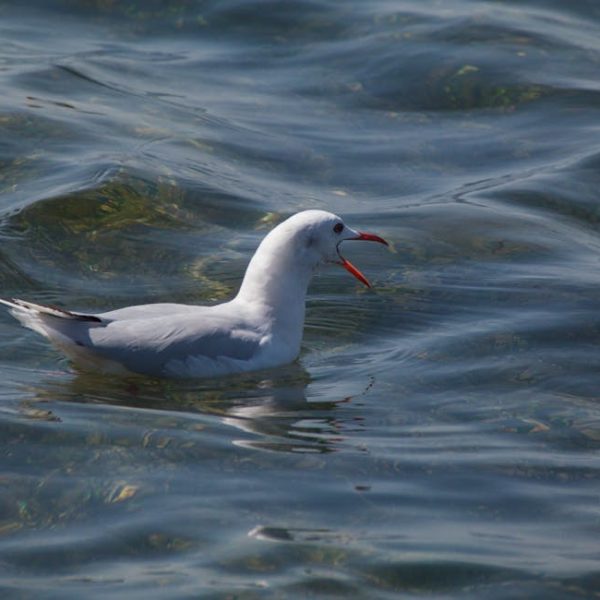Birds don’t come with GPS devices installed, so when you set up a new feeder, it takes a bit of time for our feathered friends to find it. The length of the discovery period hinges on a gamut of factors including the feeder’s location, the variety of food supplied, and the species perching in your locale. This article hones in on significant elements, providing insightful strategies to hasten the entire process.
Factors Influencing Bird Attraction to New Feeders
From the brightly colored Northern Cardinal to the Black-capped Chickadee, each species has unique proclivities when it comes to identifying a new source of food. The Shamrock Starlings and the House Sparrows usually adjust to a new feeder rapidly due to their adaptable nature. However, shy species such as the Wood Thrush may take a bit longer to come around.
Here’s a pro tip: Vibrant feeders or ones shrouded with bird-friendly flora induce an innate curiosity in birds, speeding up the scouting process tremendously!
Understanding Bird Feeding Habits
Grasping the feeding habits of our aerial companions are pivotal in magnetizing them to a new feeder. For instance, migratory birds are constantly on the move and are more likely to inspect a new feeder compared to local birds who may already have their favored feeding spots.
In order to attract these local birds, keenly observe their activities and patterns. Are they early birds or late risers? What food do they like? Accumulate your findings to strategize effectively.
The Role of Food in Attracting Birds to a New Feeder
Just as we enjoy a diverse menu, birds too have specific food preferences, impacting the allure of a new feeder. For instance, sunflower seeds are like a superstar magnet for a wide array of species while suet attracts woodpeckers and nuthatches.
Here’s your checklist for preferred bird meals that can coax birds into visiting your feeder:
- Black oil sunflower seeds
- Nyjer seeds
- Suet blocks
- Peanuts, preferably shelled
- Mixed seeds
But it’s not just what you serve, it’s how you serve it! Proper storage of birdseed ensures its freshness, augmenting its allure. Store your birdseed in a cool, dry place and make sure it is sealed properly for maximum efficacy.
Location and Safety of the New Feeder
Ever dined at a restaurant with a beautiful panoramic view? Similarly, the location of your feeder plays a pivotal role in attracting birds. Places with a clear field of vision from threats, yet close enough to the protective foliage, usually draws birds like a charm.
Here are a few best practices for feeder location:
- Away from high traffic areas
- Within a short flying distance to shrubs or trees
- At least 10 feet away from windows
- Predators-proof with baffles
Patience and Observation in Bird Feeding
While there’s no definitive timeline for birds to discover a new feeder, expect a period of at least one to two weeks. Patience, along with a keen eye, can give you a clear understanding of your feathered visitors, helping to tailor the perfect feeder for them. Whether it’s sticking with a tested food variety or regularly changing the menu involves a series of trial and error.
But remember, a clean feeder is a popular feeder so ensure it’s well-maintained to keep your avian guests coming back for more!
It’s noteworthy that aside from location, food, and species, factors like the feeder’s design and seasonal variations also play a significant role in attracting birds.
Design and Type of the Feeder
Birds exhibit aesthetic preferences too! The color and design of the feeder greatly influence how quickly they discover it. For instance, red and orange are known to attract hummingbirds while blue attracts Blue Jays.
Similarly, feeder’s type also matters. Some birds such as finches prefer tube feeders while platform feeders attract a wider variety of seed-eating birds.
Seasonal Variations
Seasons sway bird discovery timelines of new feeders as well. Particularly, birds are in a constant search for a food source during winter and are likely to discover a new feeder much quicker compared to other seasons.
Creating a Bird-friendly Environment
Crafting an inviting environment for our feathery buddies can fast-track feeder discovery. Here are some tips:
- Install bird baths or water dishes for birds to drink and bathe.
- Plant native trees and shrubs that produce fruits, seeds, and nectar.
- Avoid heavy usage of pesticides or chemicals in your garden to maintain a clean and safe habitat for birds.
- Keep the noise and human activity around feeding areas to a minimum.
Wrapping It Up
Attracting birds to a new feeder is more of an art than a science. Keep in mind that adaptability is key, and what works for one species may not necessarily work for another. So, experimenting with different strategies while taking note of the results is essential. As long as you’re patient, observant, and persistent, you’ll find that the joy of bird watching is worth every effort.
Key Takeaway:
- Various factors impact how quickly birds discover a new feeder, including the feeder’s location, the type of food provided, and the bird species in the area.
- Understanding birds’ feeding habits and preferences helps in attracting them to a new feeder.
- Different bird species have different food preferences, and the quality of birdseed significantly affects bird attraction.
- The location of the feeder and its safety level plays a crucial role in drawing birds and encouraging subsequent visits.
- Regular observation and maintaining a clean feeder invites frequent bird visits, making patience essential in bird feeding.
Despite the factors influencing bird attraction to a new feeder, remember that patience, keen observation, and a bit of experimentation with different strategies go a long way in attracting your feathered friends. Stay resilient, enjoy the process, and you’re bound to reap the beautiful rewards of bird watching.
FAQs
Q: What type of feeder attracts the widest variety of birds?
A: Generally, platform feeders attract a wide variety of seed-eating birds due to their open and accessible design. However, the best feeder for you depends on the specific species you wish to attract.
Q: What colors attract birds to feeders?
A: Birds are drawn to bright colors. Red and orange hues are usually appealing to hummingbirds, while blue shades are attractive to Blue Jays. Experiment with different colors to see what works best for your local bird species.
Q: Is there a specific season when birds are more likely to find a new feeder?
A: Birds tend to discover new feeders quicker during winter, as they are in constant search for food sources during colder seasons.
Q: How can I create a bird-friendly garden to attract more birds?
A: You can create a bird-friendly environment by installing bird baths, planting native trees and shrubs that produce fruits, seeds, and nectar, and minimizing noise as well as human activity around feeding areas.
Q: How often should I clean my bird feeder?
A: Regular cleaning is essential to maintain your feeder’s attractiveness. Try to clean it at least every two weeks, or more often during high-use periods to prevent disease transmission among birds.
Don’t hesitate to share this article with fellow bird lovers to spread the joy of bird feeding. Explore more posts on our website for additional insights and tips on bird watching.












